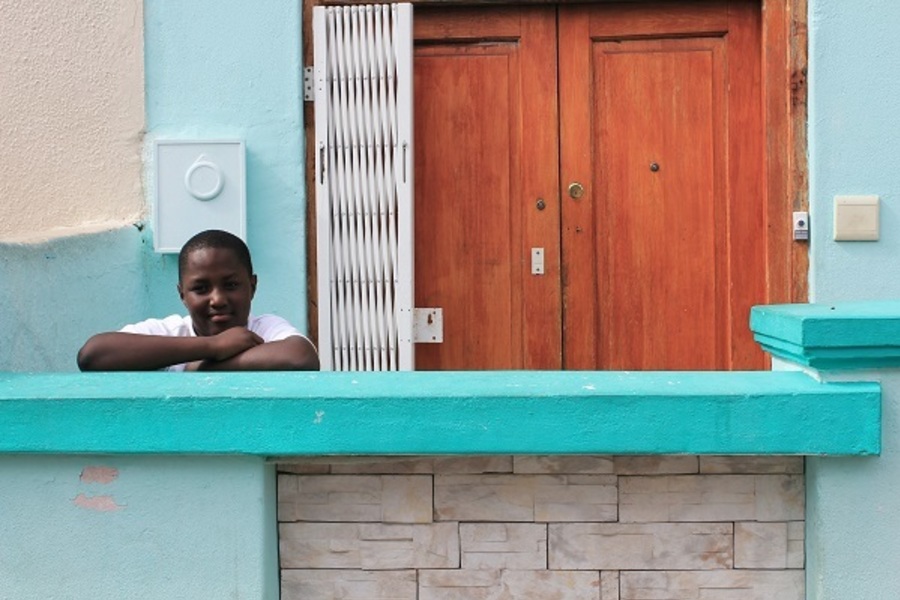Housing Problem Solving Program

Locations
- Santa Clara County - San Jose, California
Focus Area
- Housing
“We meet people where they are. We’re a housing-first community. We’re a housing-first office. We believe people deserve housing, and we do what they need to maintain stable housing.”
The Issue
The United States has long battled with homelessness. Even before the financial crisis of 2008, nearly 664,414 men, women, and children were experiencing homelessness across the U.S. For a while, trends were encouraging—the number of Americans experiencing homelessness declined consistently between 2007 and 2016. But since 2016, the homelessness population has been steadily increasing. The Department of Housing and Urban Development (HUD) reports that 567,715 people were living without a home in 2019. Although rates of homelessness continue to decline in most states, they have reached crisis levels in others—like California. In the Golden State, homelessness is 22.5% higher than it was nine years ago. And there seems to be little progress in sight.
Of the 567,715 people experiencing homelessness in 2019, 151,278 live in California. In Santa Clara County alone—home of Dell, Apple, Intel, Amazon, and other Silicon Valley powerhouses—more than 9,706 people were experiencing homelessness in 2019. That’s a 31% increase since 2017. Of these, 82% are unsheltered, meaning they live in uninhabitable buildings, under bridges, in cars, or on the streets. Over 269 families with children—921 people—were homeless. And while 74% of them were sheltered, 26% lacked adequate shelter.
Santa Clara County’s tight housing market provides little reprieve. The median rental price of a 2-bedroom home is $3,500 per month in Santa Clara County. And the market’s vacancy rates are historically low—0.3% for homes in 2017, and 3.1% for apartments. This means once someone loses their home, it’s difficult to find an alternative. And it’s even more difficult with an eviction record. With the sustained rise and expansion of tech giants, rent continues to soar, making it increasingly difficult for low-wage residents to make ends meet. Of the respondents to Santa Clara County’s 2019 Homeless Census and Survey, 36% report experiencing homelessness for the first time. Heartbreakingly, 42% of respondents say that rent assistance would have prevented them from becoming homeless in the first place. The housing market outlook and homelessness surge in Santa Clara County paint a bleak picture.
And then coronavirus. By April 30, 2020, over 30 million Americans had filed for unemployment as a result of COVID-19. Though California lawmakers like Mayor London Breed of San Francisco placed moratoriums on evictions for missing rental payments, the duration of these rental safeguards were limited. Just 90 days following the lift of California’s state of emergency, the moratorium expired. If the economy fails to recover and if struggling residents continue to encounter difficulties finding employment, evictions will increase and California’s already devastating homelessness crisis will deepen.
Today, there's a significant need for affordable, low-cost approaches to preventing homelessness. Not only is falling into homelessness demoralizing, but those who experience homelessness are more likely to develop chronic and preventable health conditions. And they’re also more likely to rely on public benefits and encounter the criminal justice system, which places major stress on local communities and public funds. Between 2007 and 2012, more than 104,206 individuals experienced homelessness in Santa Clara County—a report by the Economic Roundtable disclosed that the Santa Clara County community spent $520 million each year providing services for homeless residents. That’s over $3 billion in six years.
Now more than ever, we need to know what works to prevent homelessness. We need solutions that turn the tide—the economic, community, and human tolls are too great.
The Intervention
The Housing Problem Solving program operated by Santa Clara County’s Office of Supportive Housing aims to provide a rapid response to individuals and families seeking housing assistance. The program is person-centered and housing-focused—it provides individuals with access to problem-solving counseling and, if needed, emergency financial assistance to prevent them from falling into homelessness and entering a shelter.
Individuals who participate in the program engage with counselors who attempt to find immediate, creative housing solutions to their housing crisis, whether that means finding temporary housing options with family and friends or identifying more permanent solutions. In the case that receiving a moderate amount of money will prevent an individual from entering a shelter, immediate cash assistance is provided to participants.
Research Question
Does providing housing problem-solving counseling and emergency financial assistance to those at risk of falling homeless improve their housing stability?
Intended Outcomes
- Those who participate in the Housing Problem Solving service will demonstrate improved short-term housing stability over non-participants.
- They will also be less likely to enter a homeless shelter as a result of their housing crisis.
Research Study Design
The Housing Problem Solving study is a randomized controlled trial. Any individual who seeks housing assistance through Santa Clara County’s hotline, operated by the Bill Wilson Center, will be eligible to participate in the study..
After consenting to participate in the study, individuals will record their current housing situation and complete a baseline survey with the help of a program counselor.
Because Santa Clara County and the Bill Wilson Center do not have the resources or staff capacity to serve everyone in need of housing services, those interested will enter a lottery to participate in the program. Those selected by the lottery will receive problem-solving counseling and, if applicable, emergency financial assistance. They will become members of the treatment group. Those not selected by the lottery will not receive access to the Housing Problem Solving program, but they will still be eligible to receive other housing services offered by Santa Clara County.
Following the conclusion of the study, LEO researchers will compare participants’ housing stability outcomes and number of shelter entries across both groups.